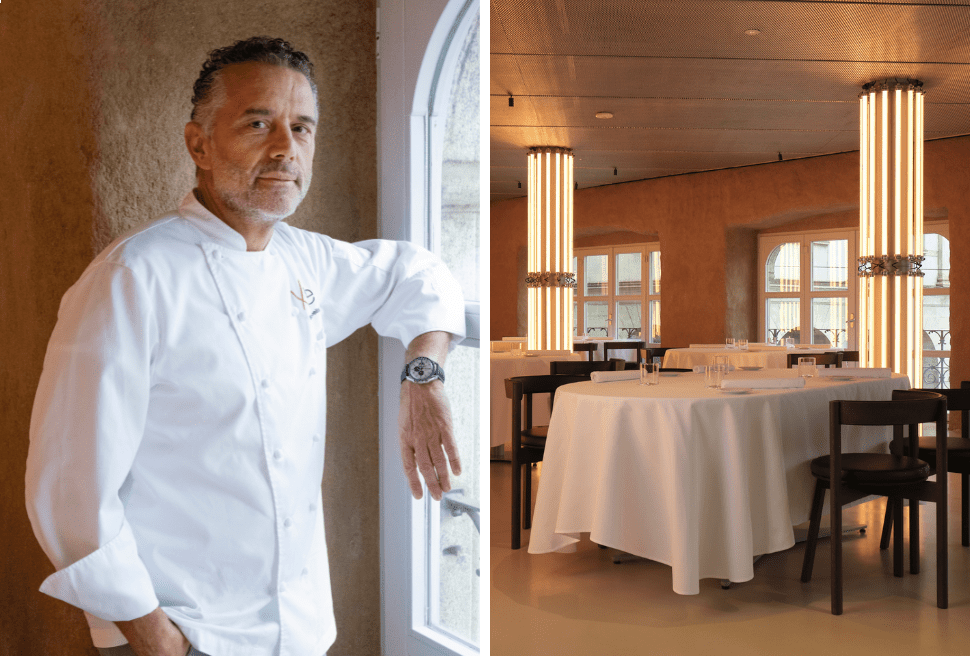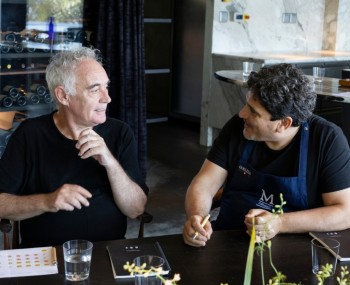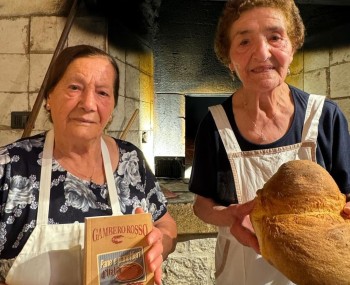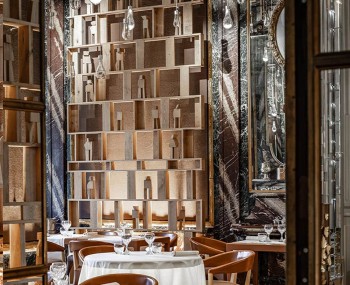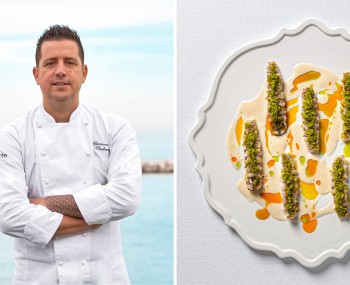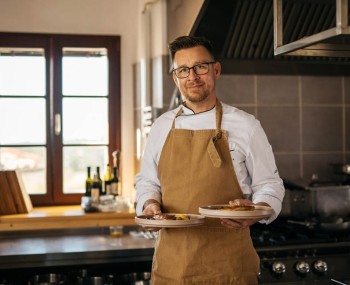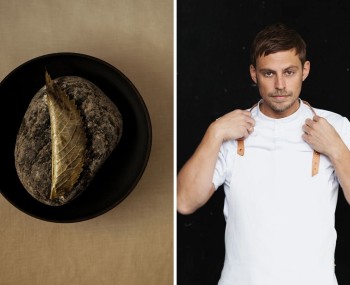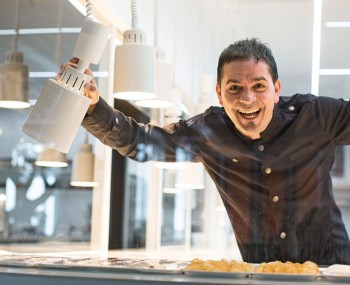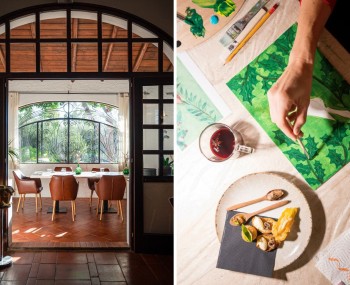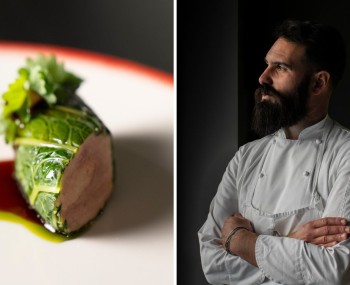It’s a new life for the “Trussardi alla Scala”: Giancarlo Perbellini challenges local tradition with clever and original reinterpretations, in a new way.
Perbellini at Trussardi
The restaurant
Giancarlo Perbellini, fresh from the acquisition of the 12 Apostoli, never stops. While preparations are in full swing for the opening of Casa Perbellini, "I gave my notice in Piazza San Zeno last July due to a disagreement with the owners. I'll think about it later. Instead, after seven months I hadn't found anywhere to go.” 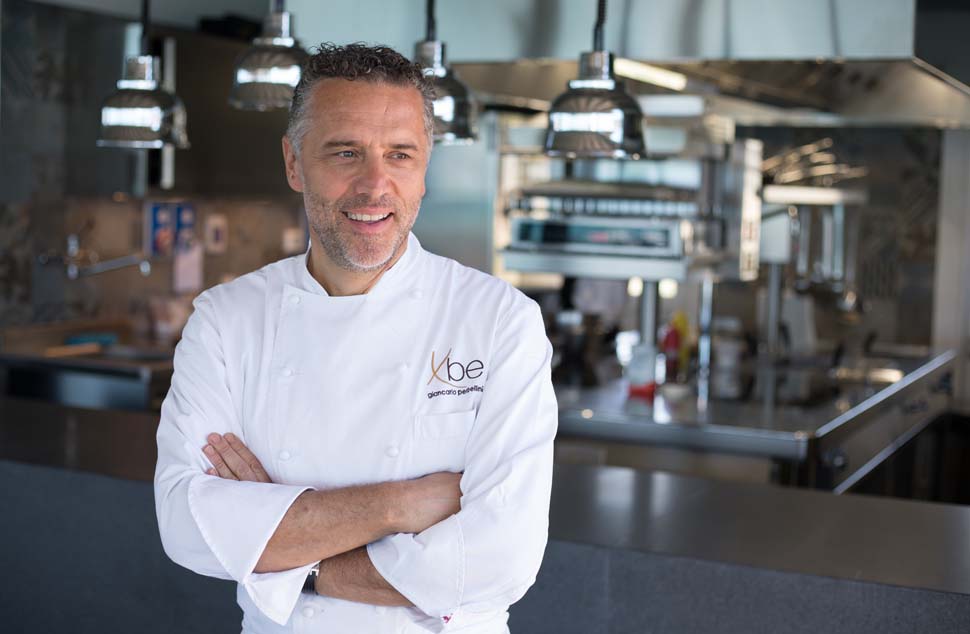
“I worked at the 12 Apostles when I was very young, then twice I had come forward. It happened that by chance Antonio Gioco sought me out, I thought about it for twenty days and said yes, urged on by my wife Silvia. At 59, I thought I would be an itinerant chef, between the lake and Sicily, Verona and Milan; instead, he convinced me that it was better to still have my own kitchen. The rooms will remain intact, except for the furniture; while the kitchen will be dismantled and reassembled on site. We will offer à la carte and tasting menus, with a more experiential proposal and a longer menu.”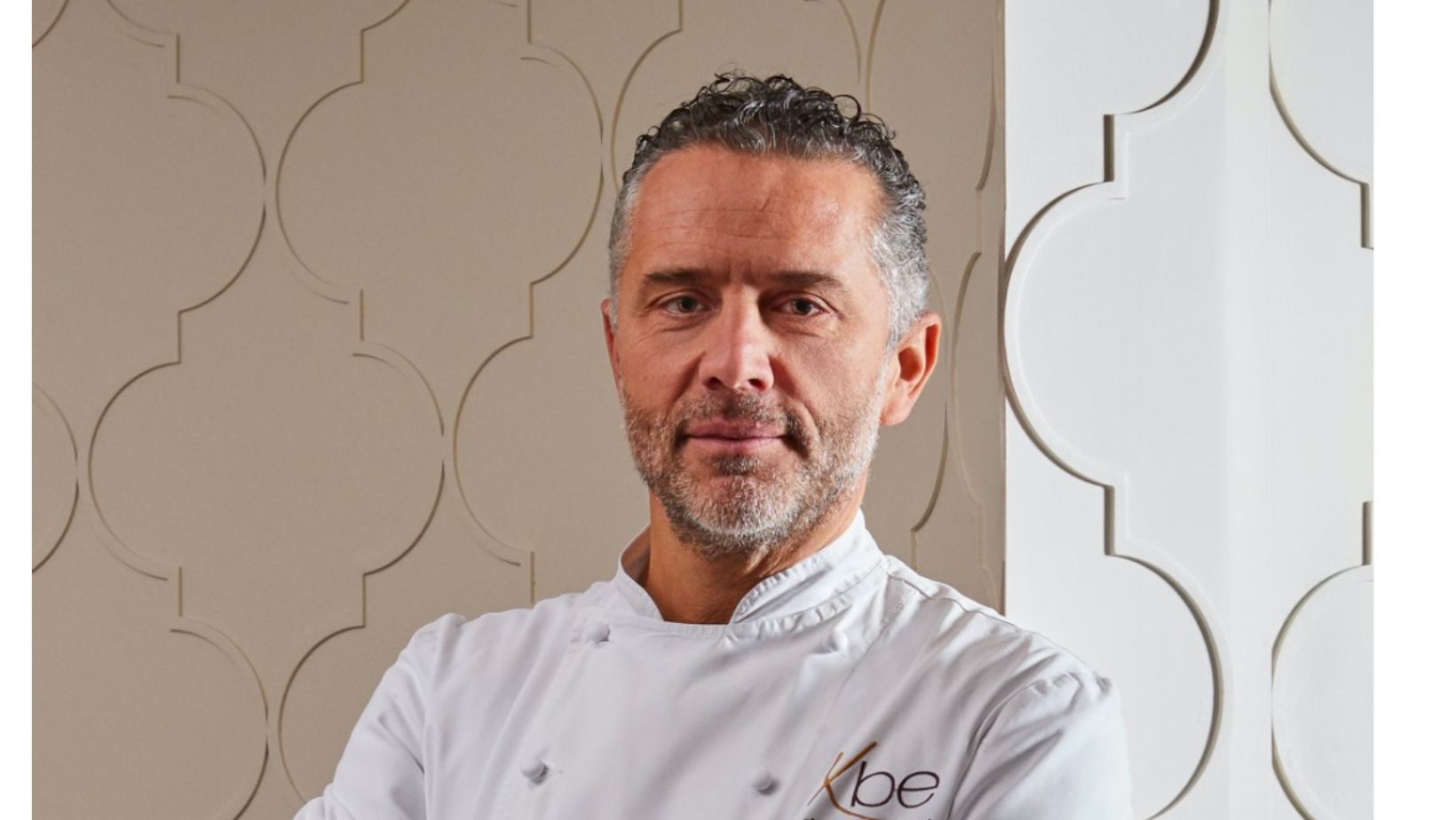
The signing for the Trussardi, to be honest, had already existed before the COVID19 pandemic, but the project had then been slowed down, until the opening a few months ago. Perbellini already had in mind the right man to place: 32-year-old Simone Tricarico, his sous chef at Casa Perbellini, who is originally from Milan. "So when we entered the restaurant, we had practically already tried all the dishes in Verona, only now are we starting with the new recipes, created locally. The starting points a clean-cut cuisine, centred on the Italian way of cooking and the choice of excellent raw materials.”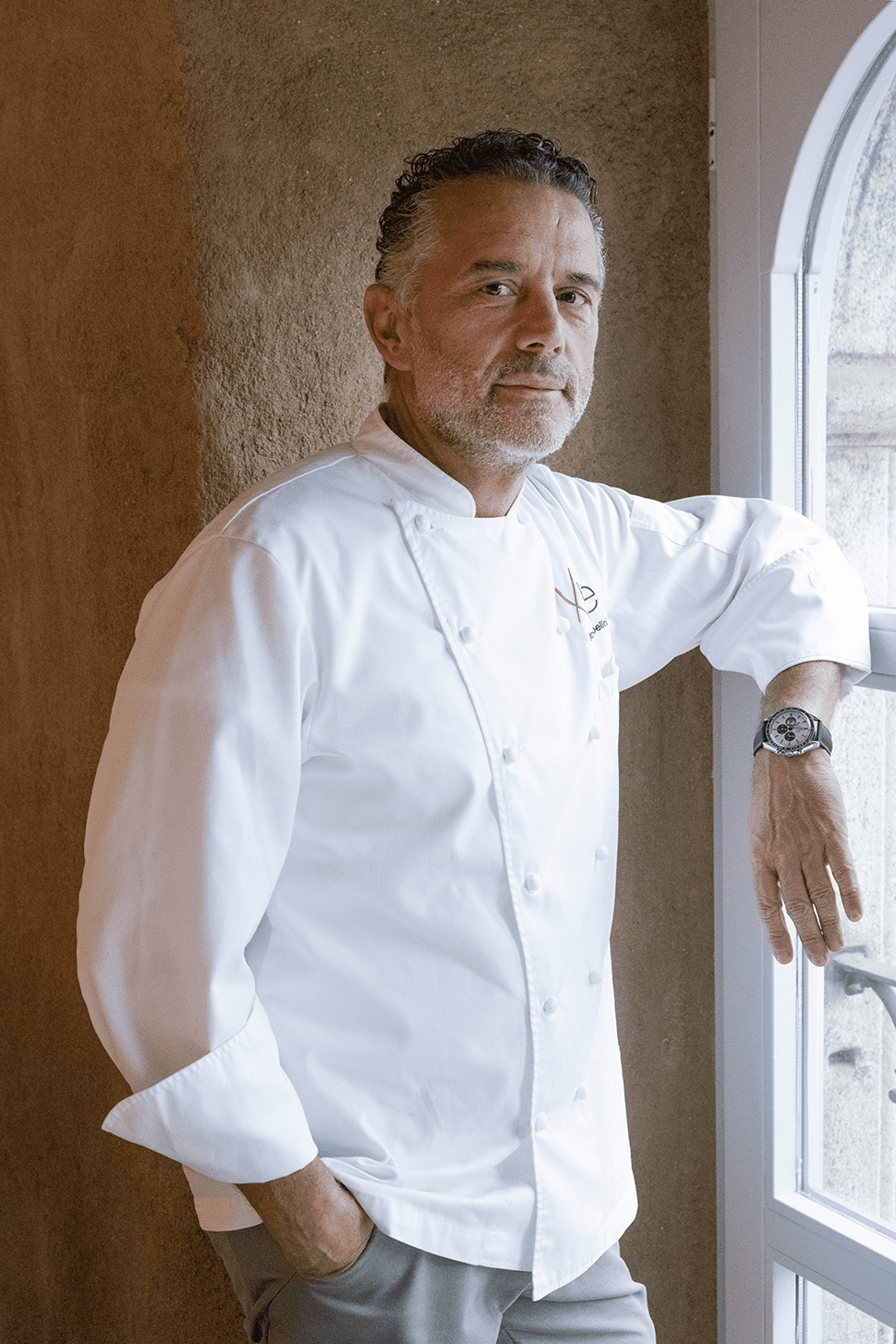
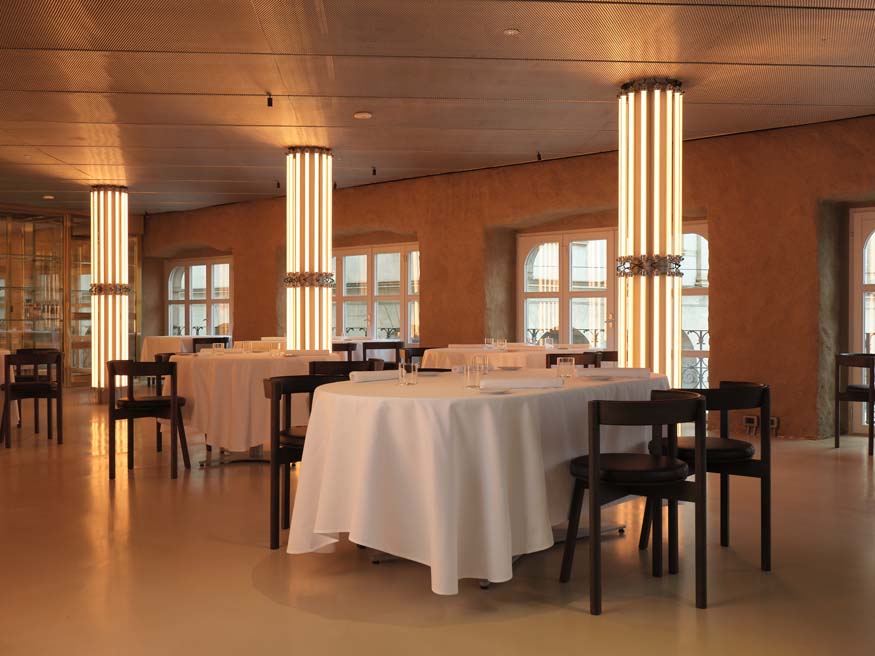
The great chef already had a hand in the city: one of his four “locande,” in addition to those in Verona, Sicily, and Lake Garda. Here chef Antonio Cacciapaglia, formerly of Isola Rizza and now a partner, has been serving Milanese specialities for six years. "Only a few dishes were enough. There is no overlap because the working method is different.” It rather resembles the restaurant in Piazza San Zeno, where cooking and preparation were all expressed to maximise freshness and fragrance, so much so that there is no sous-vide cooker in the restaurant.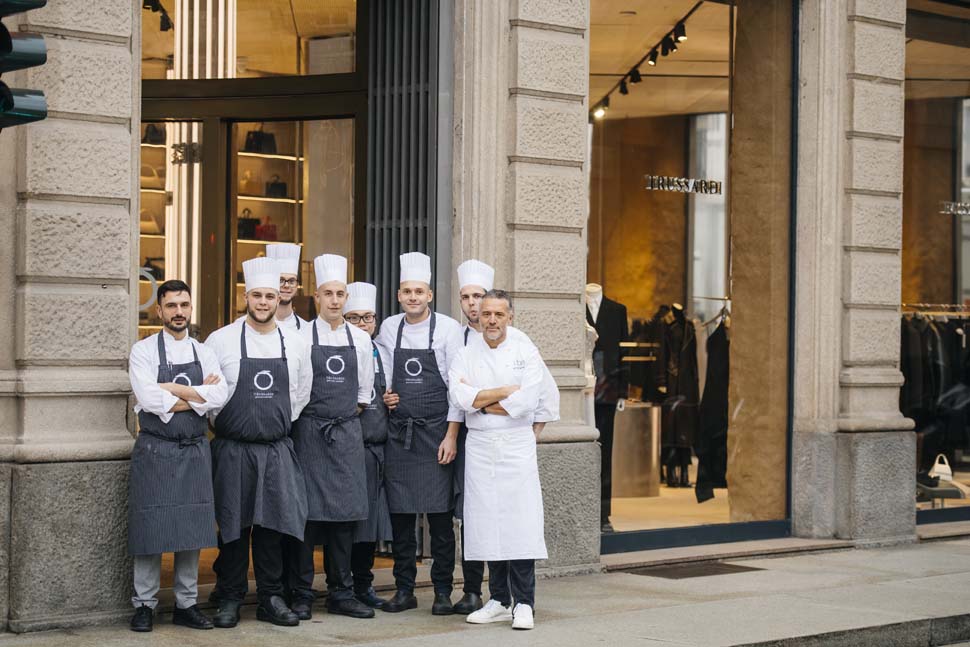
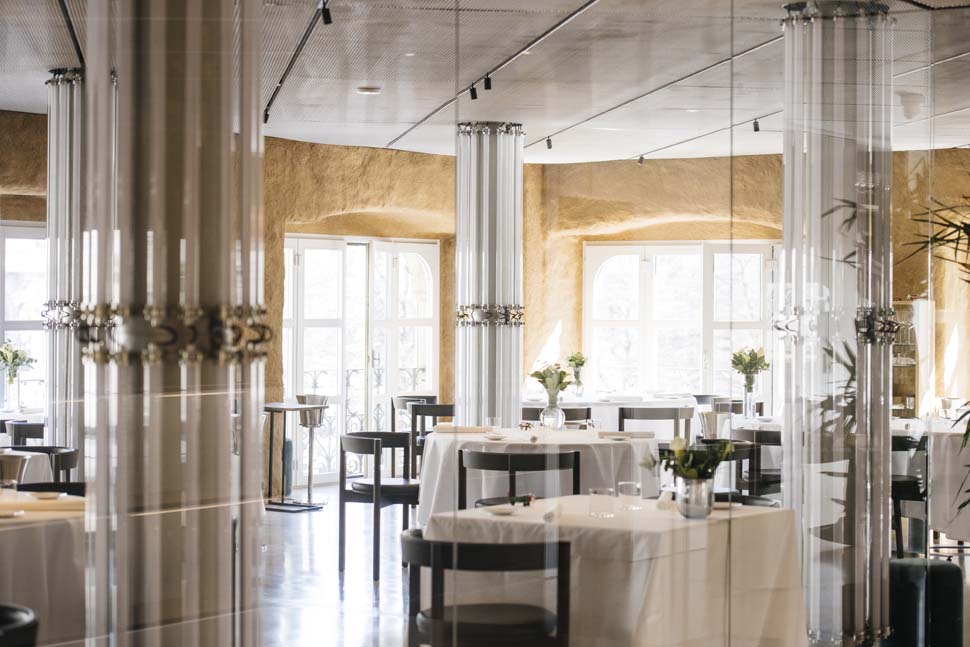
Simone Tricarico has brought to the project a professionalism built being at the top of the gastronomic world: first two years with Ducasse at the Hotel de Paris, le Grill and Louis XV; then The Waterside Inn and a season at Michel Bras; finally, the meeting with Pascal Barbot, a trimester at Seiji Yamamoto's RyuGin and the Perbellini galaxy from July 2020. "The former represents classic cuisine exported to the world, a school of organization. At Michel Roux, then, I delved into classical cuisine: whole lambs and fish arrived fresh every day. A school environment of great numbers. At Michel Bras I was looking for a different approach to vegetables, but I also discovered a formidable human side. The best sensitivity towards the raw material, however, I found at Pascal Barbot, who made me realise that I had understood nothing. Gruff as he is, told me: 'You will understand the meaning of “Astrance” restaurant in a year's time.' And I'm still working on it, on the fact that the raw material is always changing but always retains its importance.”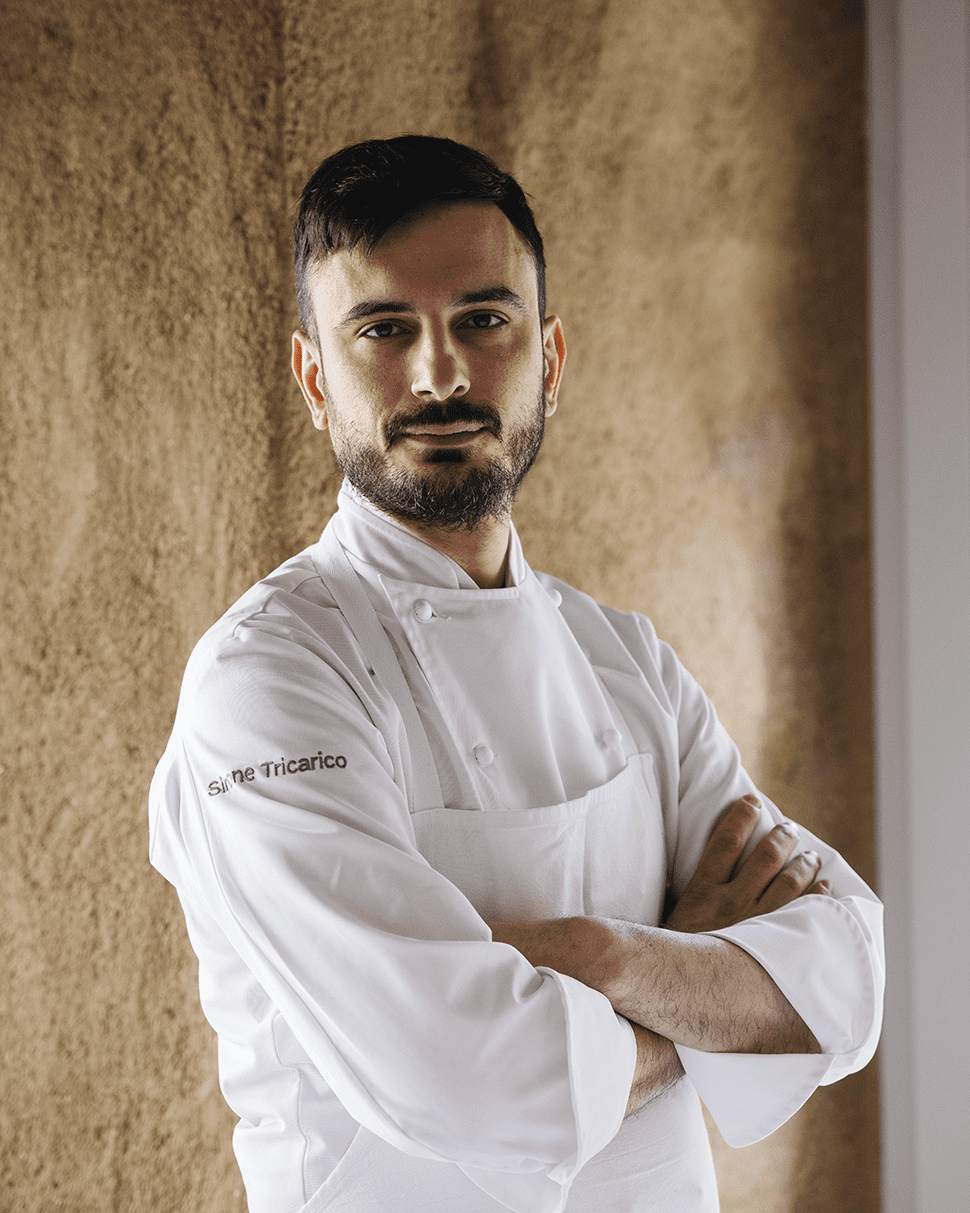
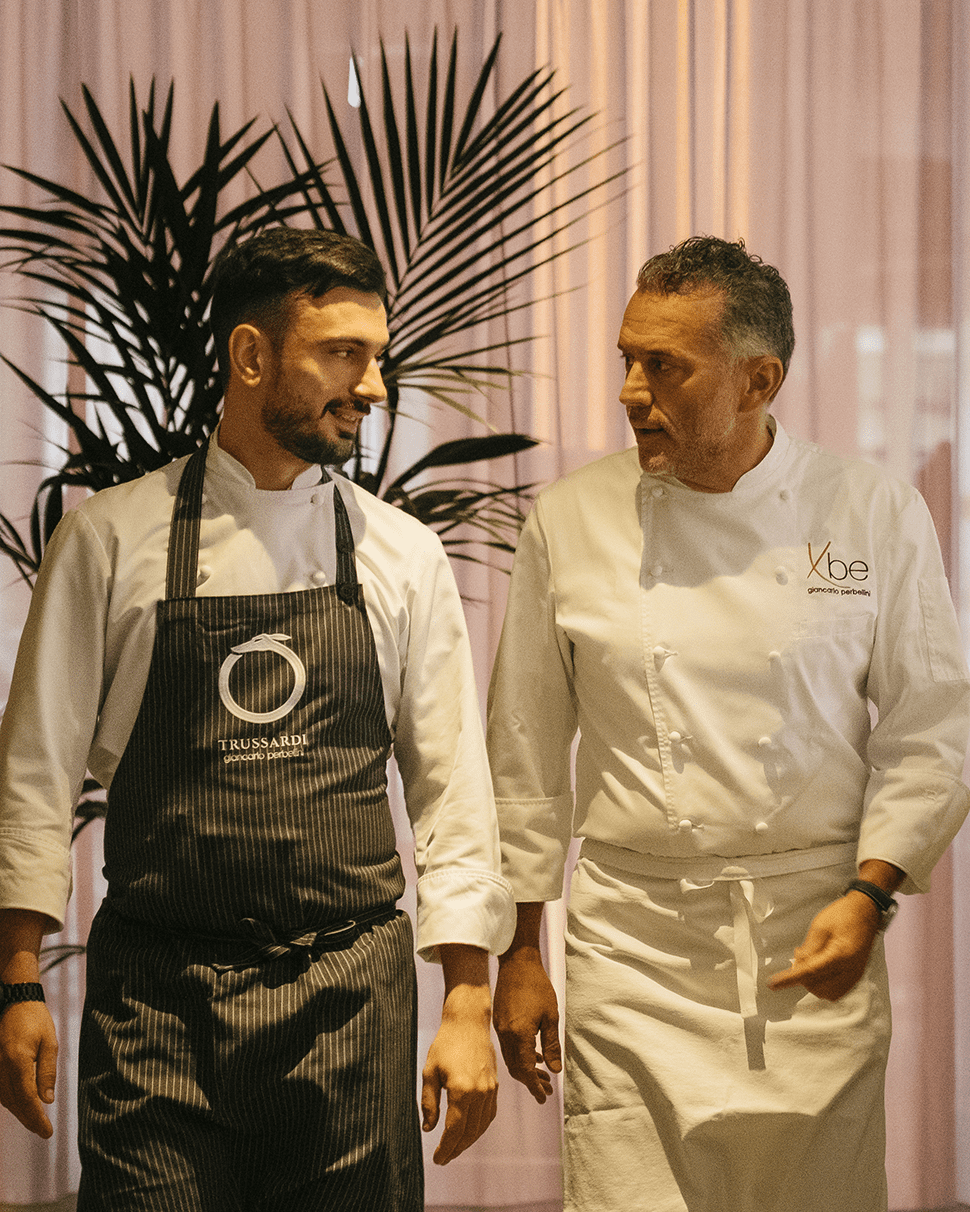
The result of the dialogue between the two chefs is a menu of sixteen courses, and two tasting menus: “XMILANO”, with its four typical dishes at 125 euros, and the Degustazione libero, consisting of six courses at 140 euros. Presenting them in the dining room is an old acquaintance of Milanese gourmets, Savio Bina and sommelier Matteo Cino, who administers a wine list of 450 labels that do well in representing France, as well.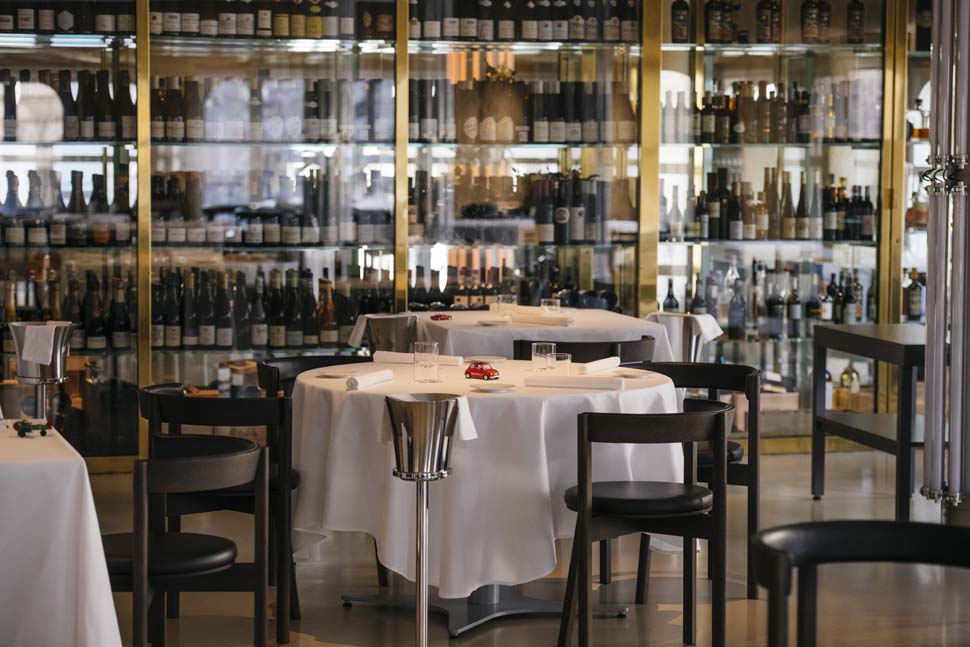

The dishes
The first menu is convincing for the brightness of the reinterpretations, focused on taste with intelligence, without a trace of déjà-vu. "Saffron risotto and Cotoletta alla Milanese (a classic crumbed veal steak) are dishes with an important history, which have been reinterpreted many times. I start from the memory of taste, to replicate the original sensations but using modern touches. Milanese cuisine is centred more on winter than summer, proven also by the small number of vegetables present in the local cuisine. But we have taken the great risk of proposing even the “cassoeula” (traditionally a stew composed of pork meat and cabbage), which in the imagination is something greasy and heavy. Instead, we serve it with freshly seared Savoy cabbage and diced pig head, ready in three minutes. The time required is substantially changed, but the result is very simple and fresh,” explains Perbellini.
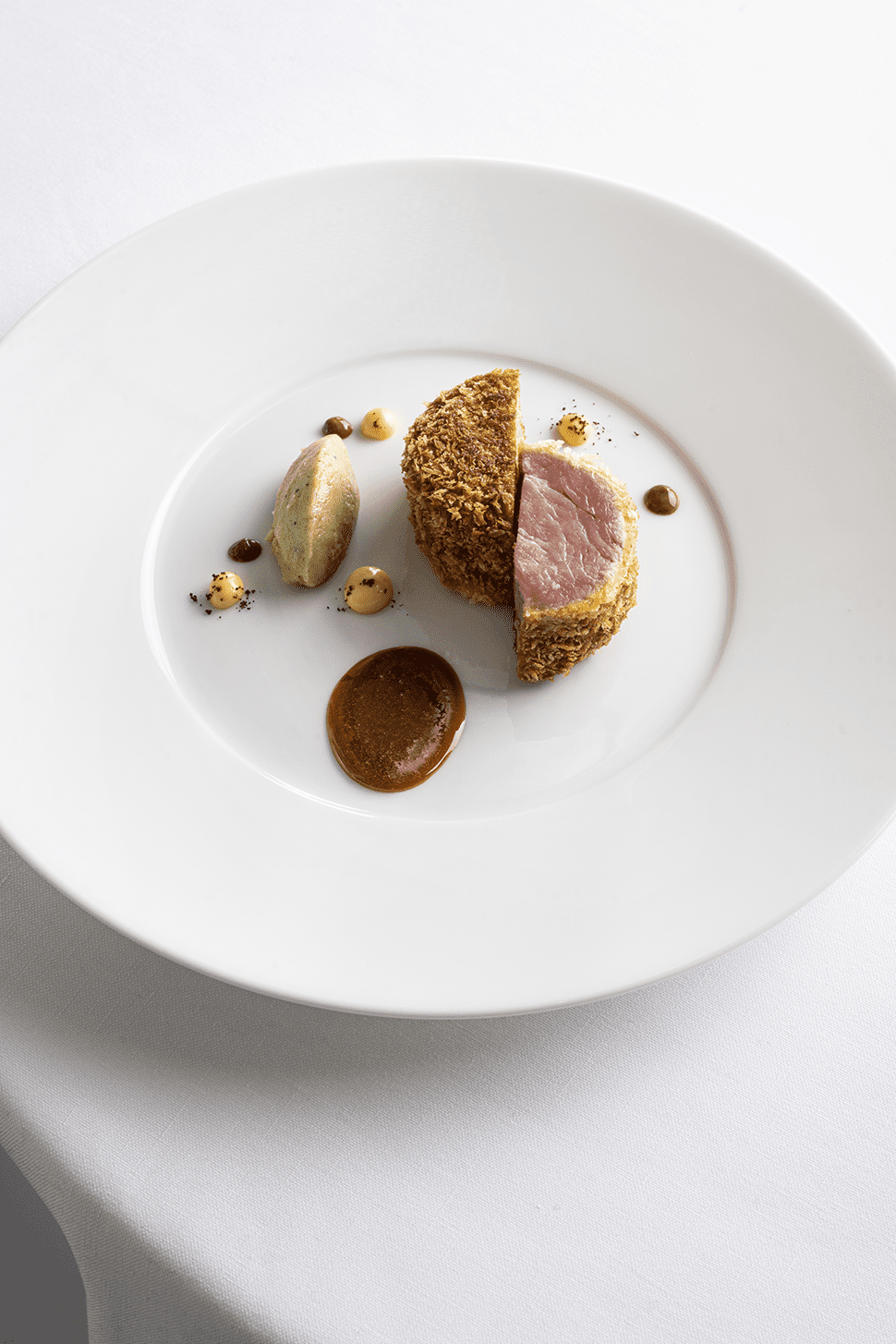
The raw and cooked version of “Cotoletta Milanese”
Exquisite, the rice, saffron and ossobuco, a three textured version of the classic inspired by a new food design concept. “I believe that it was right here that a great chef first hid an ingredient under the risotto: Andrea Berton” comments Tricarico. It’s basically a classic risotto “alla parmigiana”, with butter and Parmigiano Reggiano cheese, refreshed by a vinegar reduction and not too powerful, since it covers a tasty but not smashed shank ragout roasted in the oven, diced, and sautéed in rice flour with clarified butter, overcooked but without losing the right texture. On top then a golden dome of saffron mousse, obtained by melting the frozen bone marrow in a hot pan and deglazing with beef consommé, plus cream, butter, and Parmigiano to round it off. Simple and punchy, it’s a wonder why no one had ever thought of it; but also detailed and clear cut in taste.

Rice, saffron and “ossobuco”
For dessert, the Barbajada, a traditional Milanese drink with coffee and cocoa, but revisited with cocoa biscuit, Gianni Frasi coffee ice cream in infusion, sour chocolate mousse and dried cappuccino foam for the cream, with the complicity of pastry chef Xiao Zhang, Milanese since childhood.
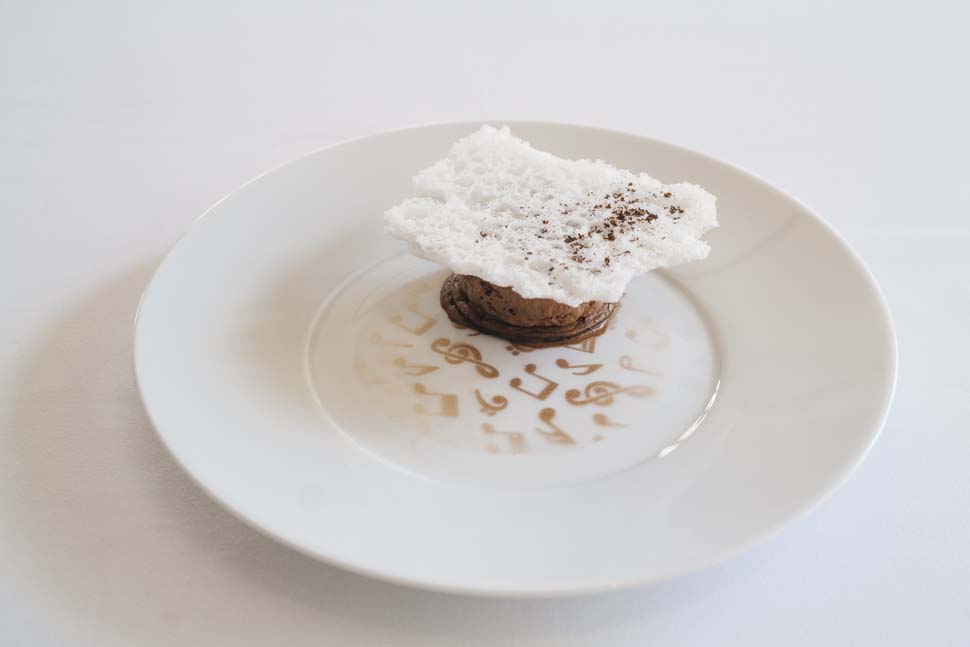 Barbajada
Barbajada
The flavors change considerably in the second menu, which shares the sequence of appetizers, guided by Italian taste: at the moment, parsley sponge with tuna sauce; the “crusco pepper”, a small local sweet pepper, with tomato cream and egg; the tartlet of broccoli cream, burnt lemon powder and “colatura di alici” gel, the umami packed juice from packed anchovies; the celeriac wafer with rocket pesto and smoked buffalo mozzarella.

Risotto “mantecato” with asparagus and morels
The raw sea bass marinated in salt and left to harden in the refrigerator for a crispy texture, served with clear consommé of soured celery, tastes like ceviche. Alternatively, fish and crustacean salad with crunchy vegetables and Martini vermouth mousse: good in its simplicity.

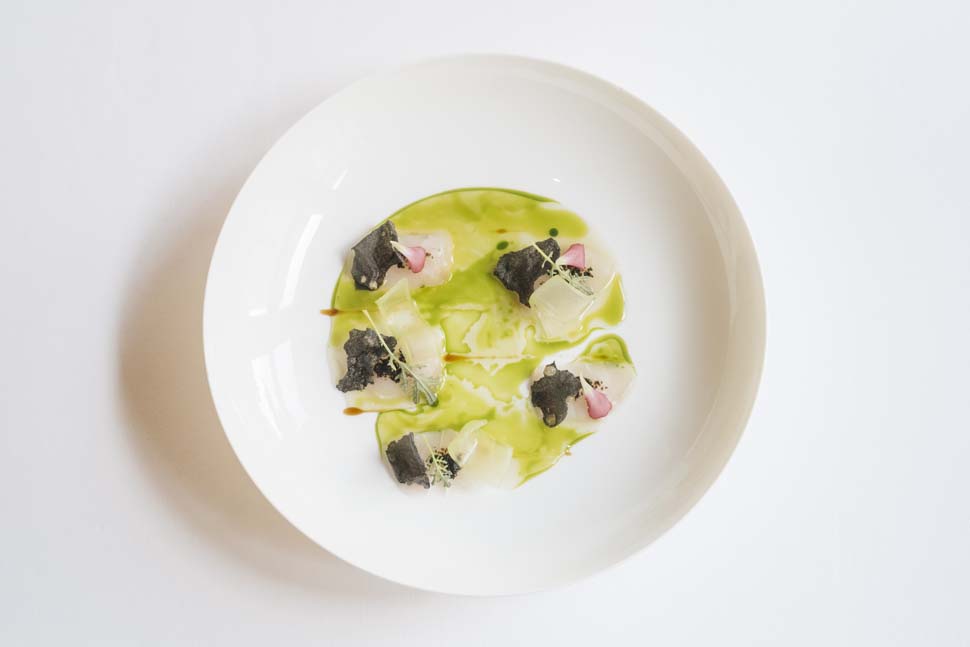
Raw sea bass, celery, lime, and spring onion
Sweetbreads are perhaps the most creative dish: cooked the traditional way, they are served in a well-orchestrated concert of contrasts together with ginger carrot cream, mustard yoghurt, and nori seaweed pesto, in a France-Japan-Italy triangle. Coming from “Piazza San Zeno” is the potato gnocchi served with potato mousse, layers of softness shattered by bottarga, cured tuna roe, that brings character. The turbot, seared, is served with snails in Marche Region-style “potacchio”, braised in wine and herbs, brushstrokes of liquorice, Perbellini's magical ingredient, and a cream of fennel emulsified in its own oil.
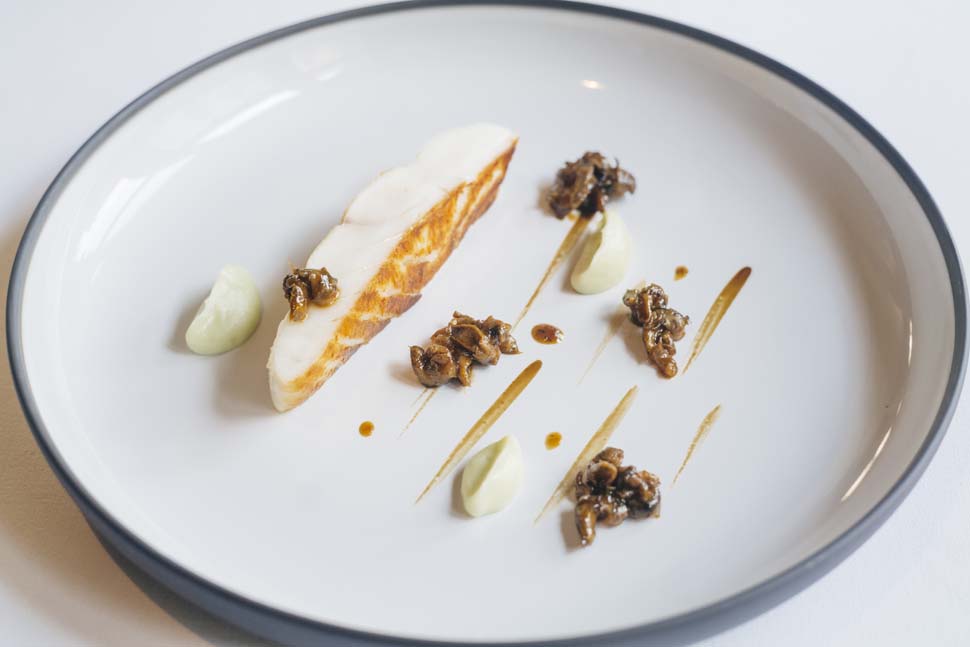
Turbot, snails, fennel cream and liquorice
The Italian pigeon, matured in the cellar for a week to lose its iron-like taste, is then cooked whole on the searing top, with the breasts elevated by hazelnut butter, an emulsion of Parmigiano and abundant olive oil, and a contrasting beer reduction, is an alternation of savoury and bitterness.

Pigeon, Parmesan and olive oil, beer, and salsify
Address
Trussardi by Perbellini
Piazza della Scala, 5, 20121 Milano MI
Tel: 02 8068 8201
Website
